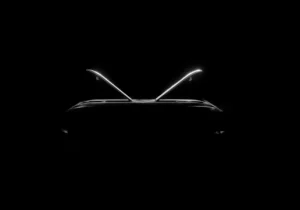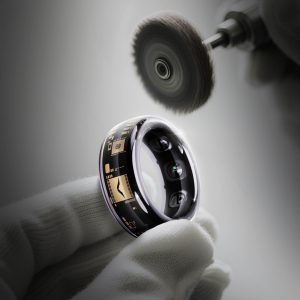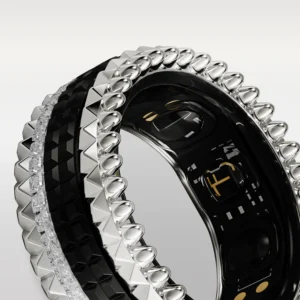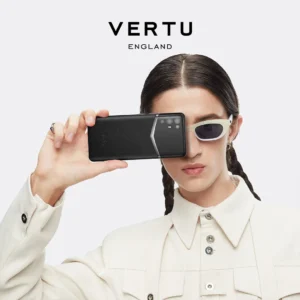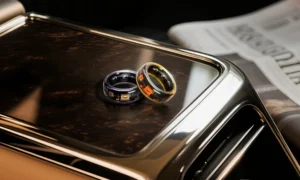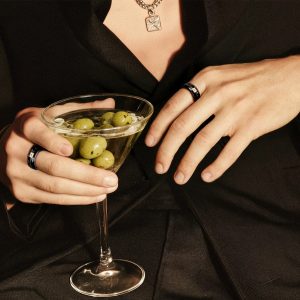
You see technology changing luxury brands very quickly. Brands use AI, personalization, and new ideas to set new rules. The luxury market utilizes Key Tech Trends for Luxury Leaders more than ever before. Here are some recent numbers:
|
Statistic Description |
Value |
|---|---|
|
Market share of AI solution segment |
62.7% |
|
Market share of personalized product recommendation |
31.3% |
|
Market share of machine learning technologies |
38.6% |
|
Percentage of top executives viewing AI as impactful |
80% |
|
Percentage of luxury shoppers interested in AI design |
56% |
|
Percentage of high-spenders excited about AI potential |
87% |
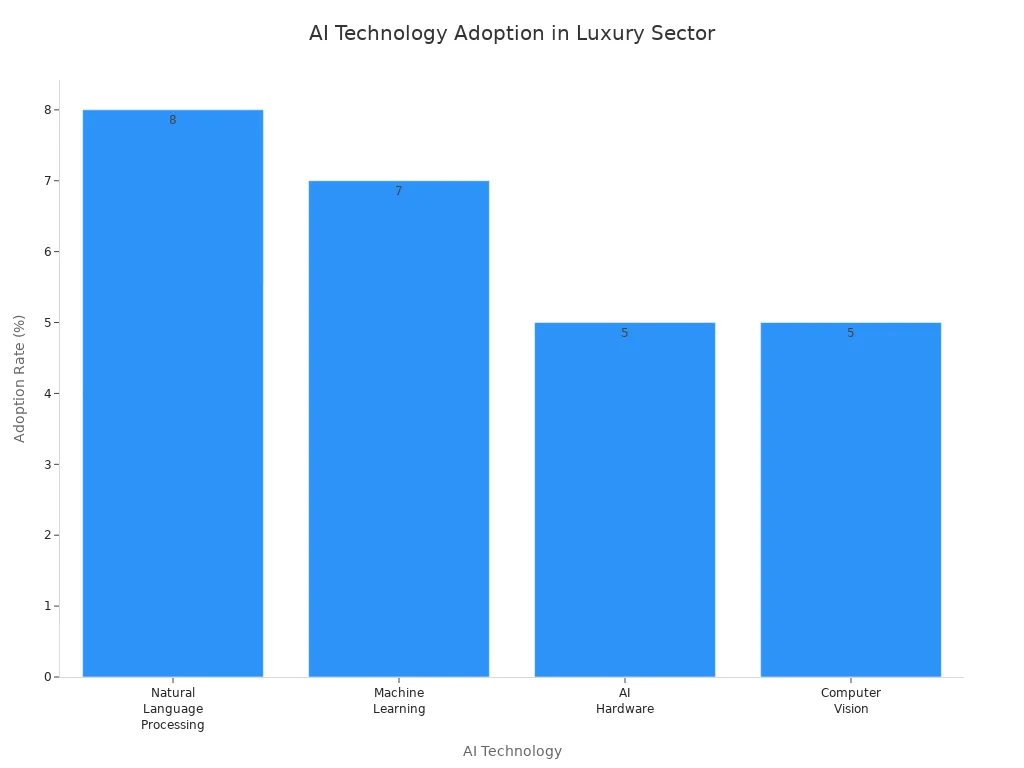
Luxury leaders like you focus on new ideas, personalization, and caring for the planet. Chloé and Gucci demonstrate how ethical sourcing and carbon neutrality are important. Louis Vuitton employs AI-driven personalization in luxury. You need to look ahead to lead with these important tech trends for luxury leaders.
Key Takeaways
-
Personalization helps keep customers coming back. Make each shopper feel important and cared for.
-
Try new ways to shop. Use things like virtual stores and AR to make shopping fun and exciting.
-
Caring for the planet is important. Show you use eco-friendly ways to get more shoppers who care about the earth.
-
Use AI to make shopping even more personal. Look at data to guess what customers like and make their shopping better.
-
Use social commerce to reach more people. Let customers shop right from social media to make buying easy.
Key Tech Trends for Luxury Leaders
Luxury brands are changing fashion with new technology. Innovation, personalization, and caring for the planet help brands succeed. The biggest trends in 2025 make special experiences and strong bonds. They also set new rules in fashion. Vertu’s Signature S is a good example. It mixes old skills with new tech. This device shows how luxury can be both classic and modern. Let’s look at the main trends you should know.
Personalization
You want customers to feel important. Personalization makes experiences that people remember. It helps customers stay loyal. Luxury brands talk to people in special ways. They give special invites and make custom products. For example:
-
Tailored communication means sending emails based on what people buy.
-
Exclusive access lets top customers go to private events.
-
Personalized products include items made just for one person.
Studies say brands using personalization can earn up to 40% more money. You can use these ideas to make every customer feel special in fashion.
Immersive Experiences
You can use tech to make cool experiences for customers. Many luxury brands have virtual stores and AR customization. They also hold fun online events. Here is how top brands use immersive tech:
|
Brand |
Technology Used |
Description |
|---|---|---|
|
Rimowa |
Virtual Store |
Online shopping with help from AI. |
|
Swarovski |
Interactive Virtual Store |
Fun games and selfie spots for customers. |
|
Louis Vuitton |
AR Product Customization |
Design bags in 3D for a closer connection. |
|
Dior |
Online Paris garden event for more fun and memories. |
These experiences help you make better relationships and keep customers coming back.
Sustainability
More people want fashion that is good for the planet. Brands with clear green rules get more trust. Many shoppers pay extra for eco-friendly items. You can share your green actions and show you care about the earth. This helps you stand out and get new customers who like ethical fashion.
AI in Luxury

Artificial intelligence is changing how you connect with luxury brands. You can see ai-powered experiences in many places, like shopping and travel. These tools help you get what you want faster. They also make each moment feel special. Let’s look at how ai is shaping the future of luxury customers.
Hyper-Personalization
You want brands to know your style and what you like. Hyper-personalization uses real-time data and ai algorithms to make unique journeys for you. Brands use generative ai tools to design custom products and offer special clienteling. For example, you can try on clothes virtually. You can also get suggestions based on what you bought before. Chanel’s smart mirrors and Dior’s ai-powered chatbots make shopping more fun. You get products and services that fit your taste. This makes you feel important.
-
Advanced analytics help brands find trends and make quick choices.
-
Generative ai tools let you see ai-made collections and custom designs.
-
Virtual assistants answer your questions and help you shop.
Predictive Analytics
Luxury brands use predictive analytics to know what you want before you ask. They look at what you bought and how you act to suggest new things or invite you to events. This helps brands stay ahead and keeps you interested.
-
Real-time analytics track what people like and buy.
-
Ai guesses what you might want next, making shopping easier.
-
Personalization in luxury eCommerce helps brands stay important for new luxury customers.
AI Concierge Services
You expect great service from luxury brands. Ai concierge services help make this happen. The Vertu Signature S has a Ruby Key that connects you to a 24/7 concierge. Other brands use advanced ai to give fast and personal help.
|
Brand |
Service Description |
|---|---|
|
Four Seasons |
Chat platform with real-time translation in over 100 languages. |
|
Aiello |
Voice assistant in hotel rooms, supporting 58 languages. |
|
Marriott International |
RENAI virtual concierge gives tips based on what you like. |
|
Four Seasons Beverly Hills |
Holographic concierge for face-to-face help. |
|
Peninsula Hotels |
PenChat platform uses predictive ai to guess what guests need. |
You get quick answers, personal tips, and smooth service. By using ai, luxury brands make customer experiences better and set new standards in clienteling.
Digital Transformation
Digital transformation is changing how you shop for luxury. Brands mix their stores with online shopping. This gives you a smooth and easy experience. You can look at things online and then go to the store. You do not miss anything when you switch between them. This helps you get what you want fast.
Omnichannel Experience
Luxury brands use omnichannel to link all parts of shopping. You can see if something is in stock online. You can pick it up at the store. You get updates right away and special help just for you.
It is important for luxury stores to know what they have in stock. People want to see what is available right now. Brands must deliver in many ways to keep customers happy.
-
80% of people think the experience is as important as the item.
-
73% of luxury shoppers like things made just for them.
Omnichannel shopping brings all customer steps together. This makes shopping better and more fun for everyone.
Virtual Showrooms
You can see luxury items from anywhere using virtual showrooms. These online rooms let you shop without going to a store. You can talk to brands live and set up meetings from home.
|
Benefits of Virtual Showrooms |
Challenges of Virtual Showrooms |
|---|---|
|
More fun shopping with cool features |
Not all platforms work the same way |
|
Brands can reach people all over the world |
Different systems can mean more work |
|
Saves time and money |
Stores must keep prices and stock updated |
You can join live events in these online stores. You get to talk to brands and have a good time shopping.
Digital Storytelling
Digital storytelling helps brands make you feel close to them. You see products turn into fun stories online. Brands show you the life and ideas behind each thing.
-
Special stories and secret looks make people feel closer.
-
Sharing stories builds trust and makes people loyal.
You remember brands that tell good stories. This makes you feel like you belong.
Blockchain and Transparency
Blockchain is changing how you trust luxury goods. You want to make sure your item is real. Blockchain lets you check the story of each product. You can see where it started and how it got to you.
Authenticity
Fake products are a big problem in luxury. The fake market is worth $464 billion every year. Blockchain gives each item a special digital certificate called an NFT. This certificate proves your item is real. It also shows who owned it before. Resale sites use blockchain to track every owner since the item was made. You can feel sure your item is not fake.
You can tap your phone on an NFC chip in the product. This lets you check if it is real right away. Blockchain keeps a clear record of the product’s path, so you know it is real.
Some top ways to check if items are real include:
-
Everledger: Makes a digital ID for luxury goods and tracks them.
-
Entrupy: Uses smart tech to check handbags and gives quick certificates.
Supply Chain Visibility
You want to know where your luxury item comes from. Blockchain lets brands record every step, from start to finish. This digital record shows you the whole journey. You can trust brands follow good and green rules.
|
Brand/Consortium |
Blockchain Solution |
Benefit to You |
|---|---|---|
|
Louis Vuitton (Arianee) |
Digital certificates linked to serials |
Check if it is real in the app |
|
Breitling |
Blockchain timestamping for watches |
See how and when it was made |
|
LVMH (Aura Consortium) |
Check where it came from and if real |
Digital Certificates
You get digital certificates with your luxury item. These certificates prove your item is real and show its past. Brands like Louis Vuitton and Bulgari use blockchain for these certificates. You can check where your item came from and who owned it. This helps you trust the brand and feel safe about your buy.
Blockchain makes it easy to see the whole story of your luxury item. You get proof, clear info, and peace of mind.
Sustainability in Luxury
You see that luxury brands are changing to help the planet. Many shoppers want brands to use better materials. People want companies to care about nature. There are now stricter rules for making products. Brands use new ways to track what they make. They also use technology to show how they protect the environment.
Eco-Friendly Materials
Luxury brands are picking new materials that are good for the earth. Some companies use organic cotton and recycled polyester. Others use vegan leather and mushroom leather. Car makers put recycled things inside their cars. These choices help lower waste and stop pollution. Brands like Gucci, Stella McCartney, BMW, LVMH, and Patagonia are leaders. They use eco-friendly materials and try to make no waste. More products now come from recycled or organic things.
-
Organic cotton and wool save water.
-
Vegan leather and mushroom leather do not hurt animals.
-
Recycled polyester and nylon help cut plastic trash.
Circular Economy
Luxury brands are changing how they sell and reuse things. Many companies let you sell back your old items. You can also buy vintage pieces from trusted brands. This keeps products in use for a longer time. It helps lower waste. Burberry works with The RealReal. Alexander McQueen works with Vestiaire Collective. Some brands sell their own vintage items too. The circular economy is getting bigger in fashion.
-
Resale markets let you buy and sell used luxury goods.
-
Buy-back programs give rewards for returning items.
-
Vintage sales help old products get used again.
Sustainability Reporting
Brands now share more facts about what they do. New rules in 2025 make companies show how they help the earth. Brands use digital tools to track and report their progress. Many companies give clear reports on where their products come from. More brands use the same ways to prove their claims.
|
Trend |
Description |
|---|---|
|
Regulatory Trends |
New EU rules make brands report on sustainability and product data. |
|
Supply Chain Scrutiny |
Brands must show where products come from and how they are made. |
Brands use technology to make reports easy to read. You can trust brands that share honest and clear information.
Data Privacy and Security
You expect your personal information to stay safe when you shop with a luxury brand. Brands know that strong data protection is not just a rule—it is a promise to you. They use advanced security tools to keep your details private. You want to feel confident every time you buy or interact online.
Consumer Expectations
You want your information to stay confidential, especially when you invest in high-end products. You look for brands that show they care about your privacy. When a brand protects your data, you feel safe and valued. This trust can make you more loyal and even encourage you to recommend the brand to others.
Customers expect brands to be open about how they use data. You want to know what happens to your information and how it is kept secure.
Regulatory Compliance
Luxury brands must follow strict rules to protect your data. They work hard to meet global standards and keep your trust. Here is how they do it:
|
Compliance Area |
Key Strategies |
|---|---|
|
Cross-Border Data Transfers |
Use safeguards like risk checks and special contracts to keep data safe across countries. |
|
Profiling and Personalization |
Stay clear about how data is used, get your consent, and avoid unfair targeting. |
|
Compliance-Driven Personalization |
Track where data goes, give you privacy controls, and make sure partners follow the same rules. |
These steps help brands balance the need for personalization with your right to privacy.
Trust Building
You trust brands that are honest about their data practices. Here are some ways brands build that trust:
-
They stay transparent about how they collect and use your data.
-
They make every digital interaction meaningful for you.
-
They highlight strong security in their messages to show you that your privacy matters.
-
Brands focus on following the law and being clear about their actions.
-
They use top security measures to protect your information.
-
When you see these efforts, you feel more confident in your choice.
You want to know your data is safe. Brands that show they care about privacy earn your trust and loyalty.
Social Commerce and Influencer Tech
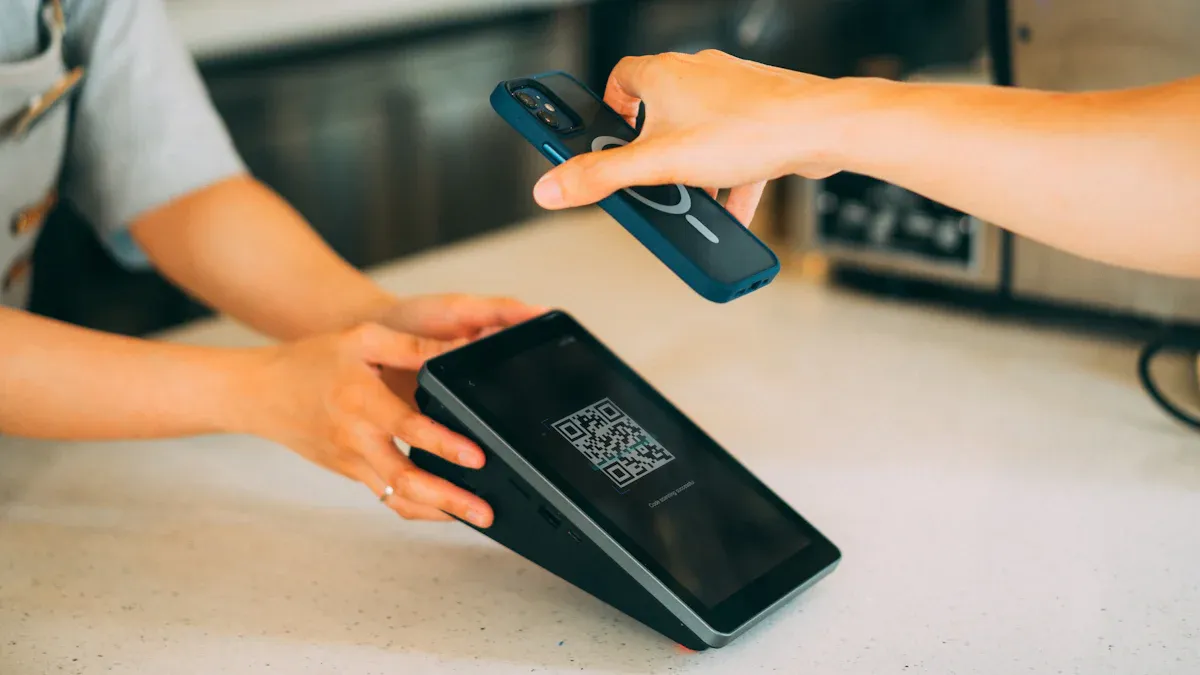
Social media changes how you shop for luxury things. You see new apps and AI influencers making shopping different. These tools help brands talk to you where you spend time. They also make buying things easier.
Shoppable Content
You can buy things right from posts, live videos, and ads. This makes shopping quick and easy. Many people use social media to pick what to buy. Here are some facts: 87% of online shoppers use social media when they shop. 68% of people have bought something from social media. 27% of shoppers buy luxury items from influencers on TikTok or Instagram. 49% of people think detailed reviews help them buy.
Luxury brands use many shoppable content types to help you shop:
|
Shoppable Content Format |
Description |
|---|---|
|
Shoppable posts |
Makes it easy to buy things on social media. |
|
Shoppable livestreams |
Lets you shop during live videos and join in the fun. |
|
Shoppable ads |
Lets you buy right from ads, not just see them. |
|
Shoppable gift guides and lookbooks |
Gives you a special shopping list with product info and ways to buy. |
Brands like Gucci use Instagram and WeChat for shoppable posts and stories. Louis Vuitton works with influencers and does live events. Burberry uses AR filters and shoppable ads on TikTok and Snapchat.
AI-Powered Influencers
AI-powered influencers are changing how you see brands online. These virtual people match the brand’s style and ideas. For example, a luxury watch brand used a virtual influencer for a campaign. AI helps brands pick the best influencers and check how well campaigns do. This makes ads work better and helps you find new products in fun ways.
ROI Measurement
You want to know if social shopping works. Brands check many things to see if they are doing well: Social engagement rate, follower growth, website visits, conversion rate, average order value, and revenue. Brands also track spending, set budgets, and try new ideas. Building a strong brand over time is important. It helps brands keep loyal customers and grow. When you feel close to a brand, you are more likely to buy again.
You see the luxury market changing fast. You can keep up by using AI and new digital tools. You should also care about the planet. Top brands like Burberry and Gucci use digital ideas to make strong groups of fans. You can follow these steps to help your brand stay popular:
-
Team up with influencers to find new shoppers.
-
Hold online events for special customers.
-
Use data to make marketing fit each person.
-
Make a checklist to match your digital plans with your brand’s look.
FAQ
What is the biggest tech trend for luxury brands in 2025?
You will see AI lead the way. AI helps brands offer personal experiences, predict what you want, and improve service. This technology makes luxury shopping smarter and more enjoyable.
How does blockchain help you trust luxury products?
Blockchain gives each item a digital certificate. You can check if your product is real and see its history. This technology stops fake goods and builds trust between you and the brand.
Why do luxury brands care about sustainability?
You want brands to protect the planet. Luxury brands use eco-friendly materials and share reports about their actions. These steps help you feel good about your choices and support responsible companies.
How do AI concierge services work for you?
AI concierge services answer your questions and help you book events or travel. You get quick, personal help any time. Devices like Vertu’s Signature S offer this service with just one touch.
Can you shop luxury items directly on social media?
Yes! You can buy luxury products from posts, live videos, and ads. Social commerce makes shopping easy and fun. Brands use influencers and shoppable content to reach you where you spend time.

